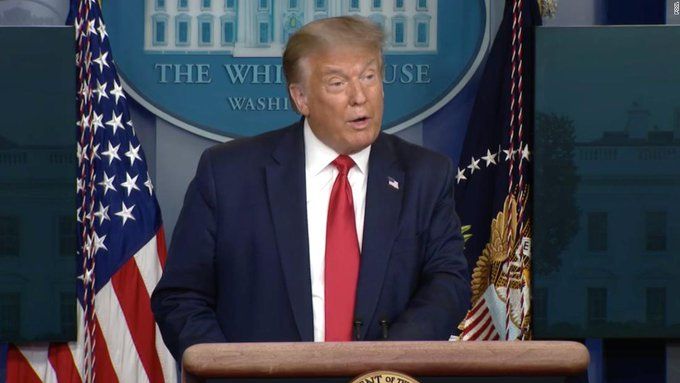Just over 1.1 million people filed new claims for jobless benefits in the week that ended August 15, the US Labor Department said Thursday, defying expectations for a more moderate rise.
That was an increase of 135,000 from the week prior and brought new claims back above the one million mark, only the third time new applications have increased since the beginning of April in the early weeks of the coronavirus pandemic.
And new applications under the special pandemic program for those not normally eligible for benefits also rose, increasing by more than 53,000, according to the report.
The US is facing both the world’s worst coronavirus outbreak and massive unemployment, with the latest data well above any single week of the 2008-2009 global financial crisis.
But the volume of new claims has been trending down, and the four-week moving average fell by 79,000 in the latest week to 1.75 million.
The mixed report comes as Congress and President Donald Trump’s administration have yet to agree on additional emergency spending to boost the flagging US economy after the expiration of key provisions of the $2.2 trillion CARES Act relief measure.
White House economic adviser Larry Kudlow described talks as “rather stalled” in a Thursday interview with Fox Business Network.
The CARES Act apportioned an extra $600 in weekly payments to unemployed workers while creating the Paycheck Protection Program (PPP) to give loans and grants to companies struggling amid the downturn, but both programs expired and investment banker Dan Alpert linked that to the jump in claims.
“These elevated claims are driven by repeat layoffs, not first-time claimants,” Alpert said on Twitter. “Workers who were laid off, put back on payrolls under the Payroll Protection Program, which covered eight weeks of salaries, and then laid off again when the money ran out.”
In the absence of a new aid package, President Donald Trump earlier this month signed an executive order to try to address the gap, including one that would give as much as $400 in extra benefits to laid-off workers but only a handful of states have signed on so far.
Nancy Vanden Houten of Oxford Economics said despite the low uptake, the Trump’s order may have influenced the latest figures.
“That data suggest that the recent decline in claims may have been due in part to the expiration of supplemental benefits and the increase may reflect the partial restoration of those benefits,” she wrote in an analysis.
For the week that ended August 8 the insured unemployment rate, indicating the share of people approved for benefits, continued ticking down, hitting 10.2 percent, according to the data.
And under all programs, more than 28 million people were receiving unemployment benefits as of the week that ended August 1.







